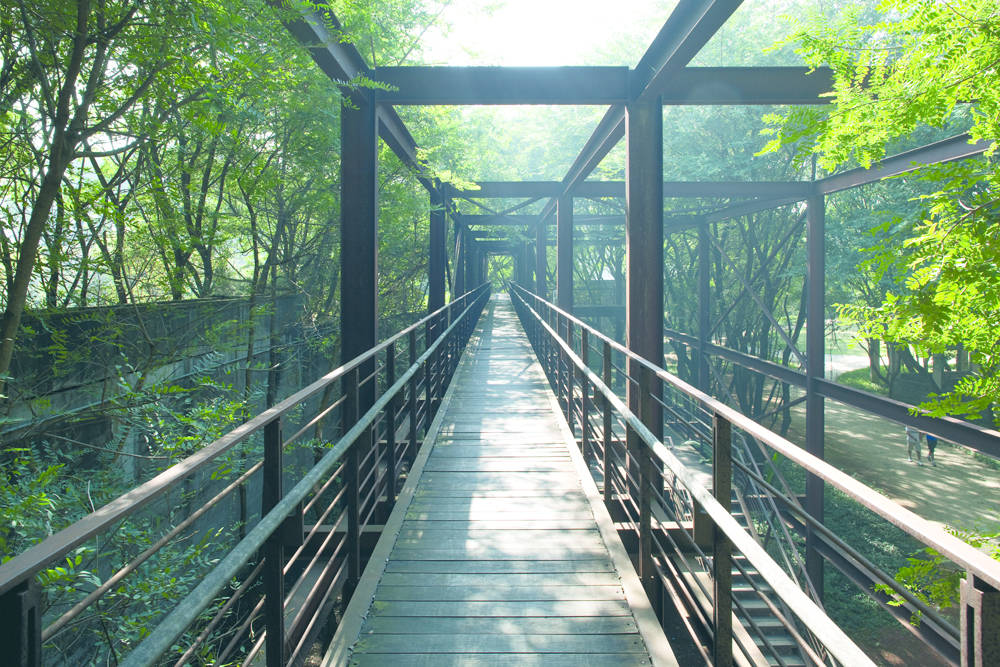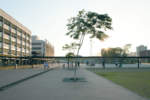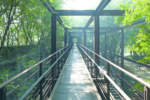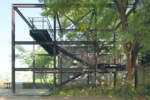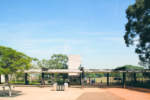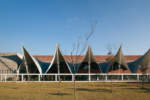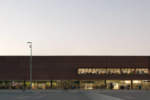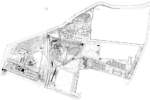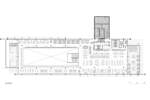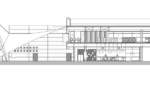architect: Aflalo e Gasperini Arquitetos
location: São Paulo
year: 2010
Youth Park
Developed for a contest promoted by the Sao Paulo State Government, which sought to give new purpose to the Prison Complex of Carandiru, the project is placed in an important urban area to the city and, due to accessibility characteristics, full of intermodal transportation systems, aims to target all metropolitan region. Due to its physical and landscaping conditions, targeting to attend potential demands, the Pilot Plan defined three main sectors: Sports Park, Central Park and Institutional Park. Sports Park: with a linear design, with 380 meters length, this sector, accessed by Zaki Narchi avenue, connects this via to the Central Park. There are several facilities such as skating areas, arborism trails, multi-sportive courts, a gymnasium, etc.
Central Park: this sector concentrates the major vegetation area, limited at West by the Carajas stream and to the East by the old state and female penitenciaries. The access is granted by Ataliba Leonel Avenue. The landscaping approach here is to have mixed vegetation. While in grass plans while in dense arborization. Windings walktroughs in different scales for pedestrians allows, beyond the stroll, access to the forest of tipuanas, that involves remaining pergolas. There are still ehxisting preserved buildings that will receive the Carandiru prison complex memorial.
Institutional Park: this area contains two recycled pavilions that receives, respectively, the Cultural Center and the Digital Inclusion / Paula Souza Centers. It is also part of the sector the Public Library building as well a new exhibition pavilion.
Library
The antithesis is strong and the metaphor becomes obvious. Where before a prison, now freedom: of knowledge, of ideas, of books. It is in this place, that could carry a dark memory forever, where is located the Sao Paulo Library. The old Carandiru penitentiary complex, in Sao Paulo, has changed its face: now it is the Youth park. Within the park, the Library, which contributed to the urban impact of this revigoration in a way that could surpass the quarter limits, bringing people from every corner of the city granting to them leisure, entertainment and culture. The building has an ample area with zenithal illumination, assuring great flexibility in the layout. The structure is composed by 20 columns and 10 beams, spaced each 10 meters. The furniture has funny and colourfull tones and ludical serigraphies were proposed in the glasses to give more intimacy to those who will read or research. The library is organized as a bookstore, aiming to attract a non-reader public as well. The idea is that this project can be replied in other cities. A new library, implemented in Brazil but inspired in the public library of Santiago, Chile. The program we find in the building is composed by a ground floor with reception, quantity, auditorium for 90 people and reading modules for children and teenagers. The ehxisting terrace on this floor was covered by a tensor structure, that reminds “nautical tents”, receives a cafeteria, sitting areas and performance spaces. In the upper floor we find another quantity space, several reading spaces being one module restricted to adults in addition to multimedia areas. There are special furniture such as tables for people with visual deficiency and ergonomic desks to physical deficients. In order to attend the accessibility regulation the floor finishing was made in a way that could be tactil, railing with two heights, inscriptions in Braile as well adequated ramps. The upper level terraces in the east and west facades, with higher insolation, were covered with pergolas made with reforestation eucalyptus and polycarbonate, assuring a pleasant space for performance as well living room. More than a beautiful and different library, this new institution has the mission to be the central of 961 libraries in the state of Sao Paulo – spreaded in 602 municipalities.


